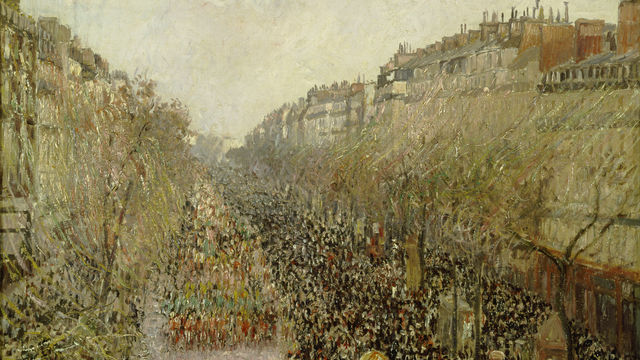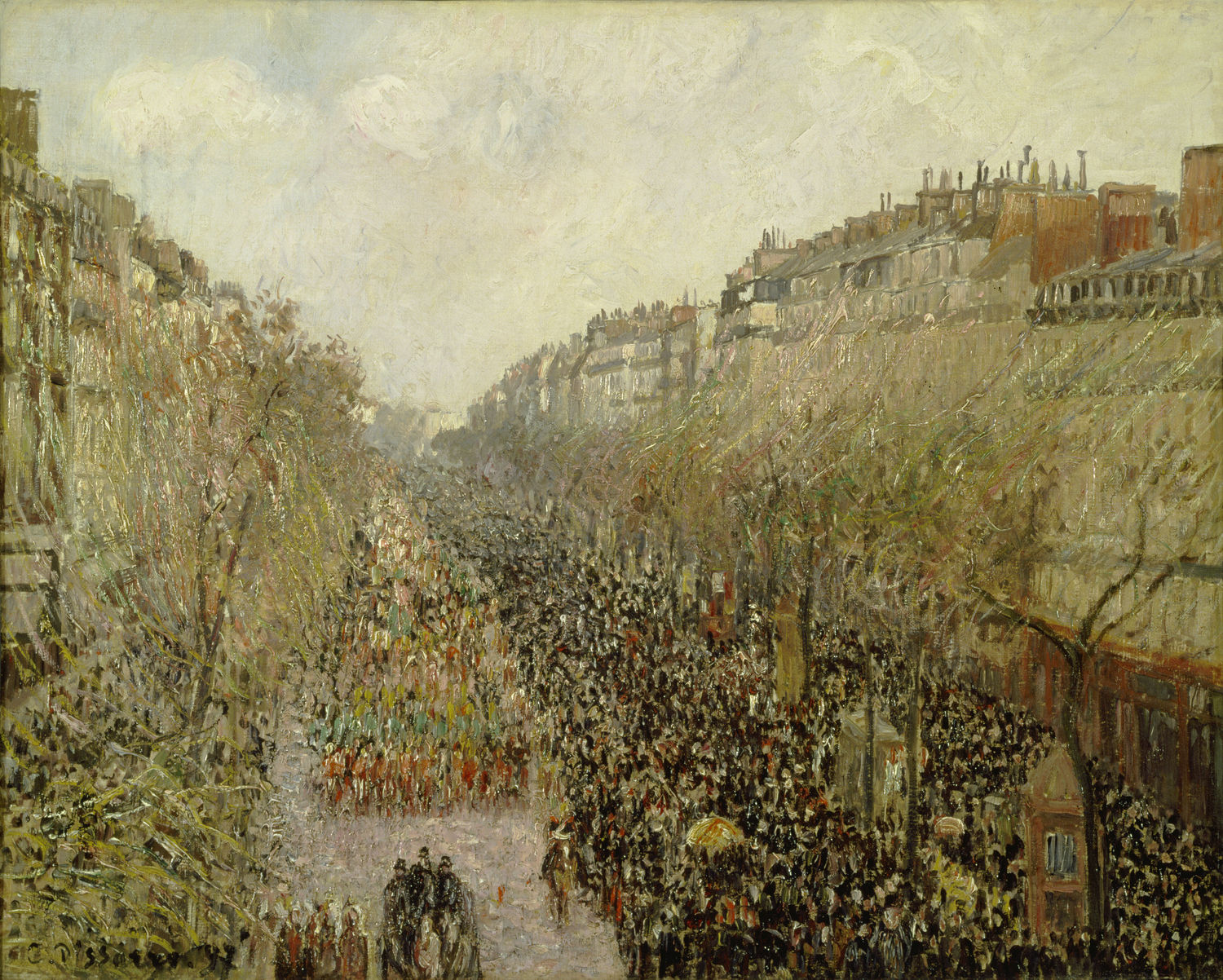
Where are They Now? Camille Pissarro’s Boulevard Montmartre, Mardi Gras
This October Camille Pissarro’s Boulevard Montmartre, Mardi Gras (1897) traveled to the ARoS Art Museum in Aarhus, Denmark for an exhibition entitled Monet – Lost in Translation. The exhibition focuses on Impressionist painting, and includes 60 works from collections around the world.

Pissarro’s Boulevard is a particularly important painting in the artist’s oeuvre, as it is one of 14 renditions of the Boulevard Montmartre that Pissarro executed at different times of the day and in varying seasons. True to the Impressionists' interest in the play of natural light on the landscape, whether in urban or rural settings, the painting includes buildings lining the grand boulevard and a large crowd both evenly swathed in mid-day sunlight. The boulevard, widened as a result of the new urban plan conceived of by Baron van Haussmann, contains a seemingly never-ending stream of people flowing down the street. The liveliness of the Parisian carnival (Mardi Gras) is celebrated by Pissarro who undoubtedly viewed this series of paintings as an opportunity to represent the city’s changing landscape, natural light, and a large gathering of the Parisian population. For Pissarro, the mixing of people of varying classes and professions at the Mardi Gras festivities would have appealed to his radical politics. Workers—butchers, launderers, traders and others—were an integral part of the carnival’s atmosphere, and Pissarro captures the conviviality of this quintessential Parisian affair with the abbreviated brushstrokes and feathery calligraphic-like marks evident in many of his late paintings.




